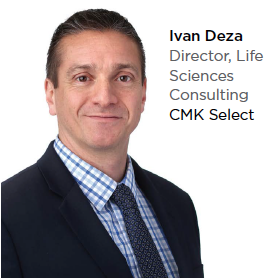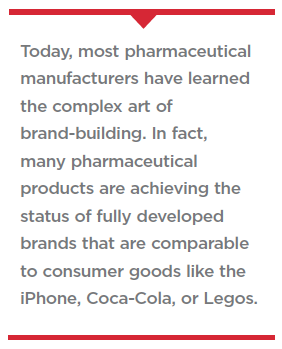 When a successful product is about to lose its exclusivity, and is facing incursions by generics or biosimilars, a pharmaceutical manufacturer sometimes decides to walk away. Rather than stand and fight the intruders, resources are demobilized, sales forces are reassigned, and management turns its attention to whichever new campaign appears on the horizon.
When a successful product is about to lose its exclusivity, and is facing incursions by generics or biosimilars, a pharmaceutical manufacturer sometimes decides to walk away. Rather than stand and fight the intruders, resources are demobilized, sales forces are reassigned, and management turns its attention to whichever new campaign appears on the horizon.
In many cases, this seems to be the smart choice, even the obvious one. After all, ahead of the “patent cliff," the original brand team has likely moved on to other endeavors. The manufacturer’s other products are seeking any residual resources that may be available, even as generic competition begins forcing price erosion. Why continue fighting a battle that may end in an extended stalemate?
The Implications of Brand-Building
Some experts believe walking away because of loss of exclusivity (LOE) can be the wrong choice in today’s environment. They say that abandoning an established, successful brand can mean squandering hard-won equity and undermining carefully nurtured relationships with physicians and patients.
Today, most pharmaceutical manufacturers have learned the complex art of brand-building. In fact, many pharmaceutical products are achieving the status of fully developed brands that are comparable to consumer goods like the iPhone, Coca-Cola, or Legos. For example, consumers seeking an erectile dysfunction medication are likely to think of the Viagra brand because of years of ads and other brand-building activities. When patients use the drug and find it safe and effective, they can develop the same sense of loyalty that people form with popular consumer products and services.
The combination of extensive brand-building and personal experience can make consumers reluctant to use a different medication, even one the FDA has approved as equivalent. They may balk at a generic replacement as a result.
Similarly, doctors can form on-going connections with manufacturers and their representatives. Physicians develop a sense of trust with certain drugs because they are proven over time and because manufacturers’ sales representatives become a familiar, reliable source of information that generic manufacturers do not typically supply.
 Doctors are also aware of the bonds between patients and drug brands. Realizing that patients rely on the predictability that many brands can offer, physicians can be hesitant to interfere.
Doctors are also aware of the bonds between patients and drug brands. Realizing that patients rely on the predictability that many brands can offer, physicians can be hesitant to interfere.
Strategic and Tactical Questions
When a pharmaceutical manufacturer has worked hard throughout the product lifecycle to create a strong, lasting brand and the brand begins nearing the patent cliff, it makes sense to take stock. Significant investments have been made to nurture what is now a substantial amount of equity. It is, therefore, logical to ask a few strategic questions about LOE, including:
Does it make sense to simply surrender the brand’s accumulated value?
Is there a way to maintain the brand’s equity and loyalty when the patent expires?
How can we stop the product from becoming a commodity after LOE?
By this point, many manufacturers have already asked tactical questions, such as:
Can an existing name and branding be used with a new or modified formulation?
Can brands within the portfolio somehow benefit from each other?
What can be done to maintain and strengthen a brand family?
In pharmaceutical planning, marketers often play a key role in answering these questions and developing a patent expiration strategy. However, considering the potential value that many brands represent, marketers should not be expected to manage LOE alone. The best results occur when the organization’s entire set of strategic resources, including top management, is focused on the situation.
In fact, some successful organizations assign cross-functional teams to plan for patent expiration years in advance. Planning may even start during the earliest stages of product development.
A Variety of Options
Facing a patent cliff isn’t easy for any manufacturer, large or small. In the past decade or more, a number of viable strategies have been developed.
Patient loyalty programs.
Many manufacturers start patient programs to maintain (or even increase) patient loyalty in advance of LOE — and then keep the programs going for varying periods of time. These efforts include:
Customer relationship management programs
Refill notification compliance/persistency programs
Co-pay cards and digital coupons
All of these programs are designed to provide value to the patient. At the same time, it is important to underscore the point by adjusting the product’s messaging toward an intense patient focus. The refined messaging is frequently delivered through carefully synchronized, multichannel promotional campaigns that include digital media, direct mail, email, and events. This often means a significant uptick in direct-to-patient communication.
Implicit in these patient-based tactics is the expectation that physician loyalists will continue writing the brand, so non-personal promotion to physicians is also required. Some manufacturers support the physician relationship with tele-sampling, call center programs and “dispense as written" campaigns.
Strategic patenting.
Planning well in advance for the patent cliff, the clinical team can identify ways to file multiple patents that offer extended protection. These secondary patents address features that lead to additional indications, extending product life.
Manufacturers can also employ an oblique, judo-like approach. Instead of directly fighting generics or biosimilars, they may yield at LOE — but have a follow-on product waiting in the wings. This “new and improved" innovator product is like a product-line extension in the consumer marketing world. The new product might offer a valuable benefit such as simplified dosing, fewer side effects, or a new route of administration (e.g., oral vs. parenteral). Some manufacturers also produce data enabling a pediatric patent extension with six added months of exclusivity.
Generic strategies.
Following the adage, “If you can’t beat them, join them," manufacturers also sometimes launch their own generic versions of the original drug.
Originator manufacturers follow three basic types of generic strategies. One is to create a branded generic, which allows the manufacturer to directly leverage existing brand equity. If the manufacturer has a viable relationship management program, it can continue connecting directly with patients on its mailing list and maintain a bond as they migrate toward the generic option.
Another option, called an “authorized generic," provides the manufacturer’s own generic version to a private-label manufacturer. The third involves licensing the product to a generic competitor so that the competitor can enter the market earlier than is otherwise allowed.
Over-the-counter products.
Some manufacturers move the product from prescription-only to over-the-counter status. This requires new regulatory approvals, and may mean reformulation and additional clinical trials. It assumes that the brand identity (and accompanying patient loyalty) is strong enough to make up for the loss of the physician’s role as prescriber.
Timing is of the Essence
Timing of all of these efforts is an essential factor in their effectiveness; however, the timing varies dramatically from one to another. For instance:
Patient-oriented programs and campaigns. Market research, messaging development, and promotional planning for these efforts should begin one to three years before loss of exclusivity. Then, three to six months before LOE, pharmaceutical manufacturers can reduce their reliance on reimbursement from health plans as they transition to co-pay cards or other types of patient support services.
Strategic patenting. This typically begins during the earliest days of product innovation but can be done later in the lifecycle as well. Development of the new forms, new indications, new delivery systems or follow-on products usually starts some years before patent expiration. Pediatric extensions exhibit a similar timeline.
Generic strategies. Planning for this opportunity starts well before the patent cliff. The timing is often based on a number of market factors, including expected actions of the generic competitor and its products.
Over-the-counter products. Given that this approach involves new regulatory approvals, it typically begins some years before LOE. It is essential to have the product ready to launch concurrent with patent expiry.
Creating a Masterbrand
Manufacturers with a robust pipeline and sufficient resources can take a different approach that negates many LOE concerns. This is a category domination approach that is sometimes called “masterbranding." It means building a commanding presence in a specific drug class. It can take years or even decades to implement and requires an exceptional level of scientific expertise. An example is Novo Nordisk’s high profile in the diabetes class.
Masterbranding has implicit power, because it means that the brand’s equity does not disappear with the patent.
Instead, the equity is broadened like an umbrella to cover a range of related products over time. In addition, when the add-on products develop their own value in the market, the masterbrand’s equity actually increases.
It’s Time to Get Started
In most of these situations, the key is to get started as early as possible. Some options, such as strategic patenting, require upfront planning during product development. Others start much later but, in almost all cases, the groundwork should be prepared years before the patent expires.(PV)
CMK Select is comprised of pharmaceutical and life sciences experts who are established strategic thinkers and who seamlessly integrate within your organization. We lead, problem solve, close capacity gaps, and deliver flawless execution throughout a products complete lifecycle.
For more information, visit www.cmkselect.com.


















